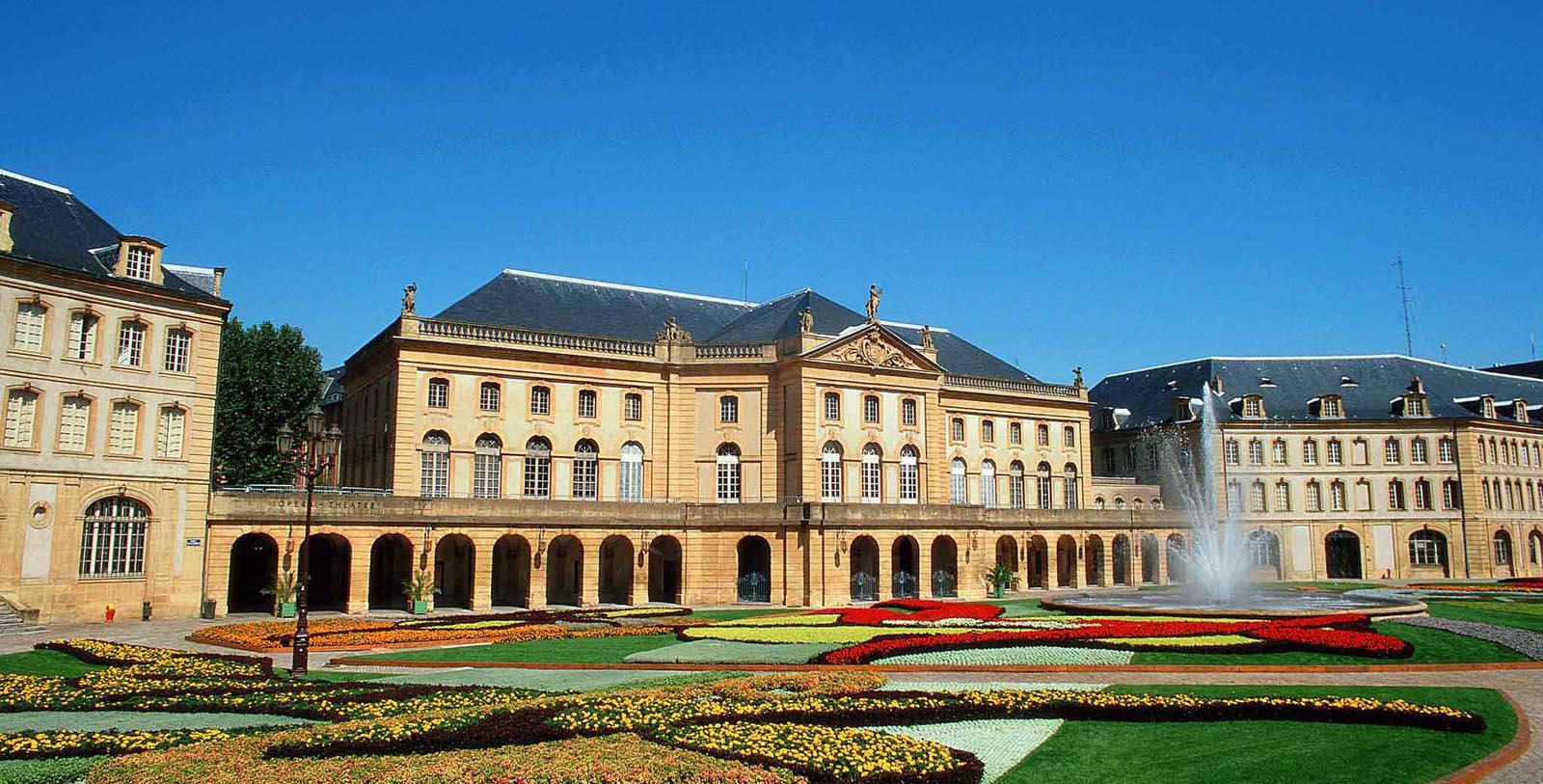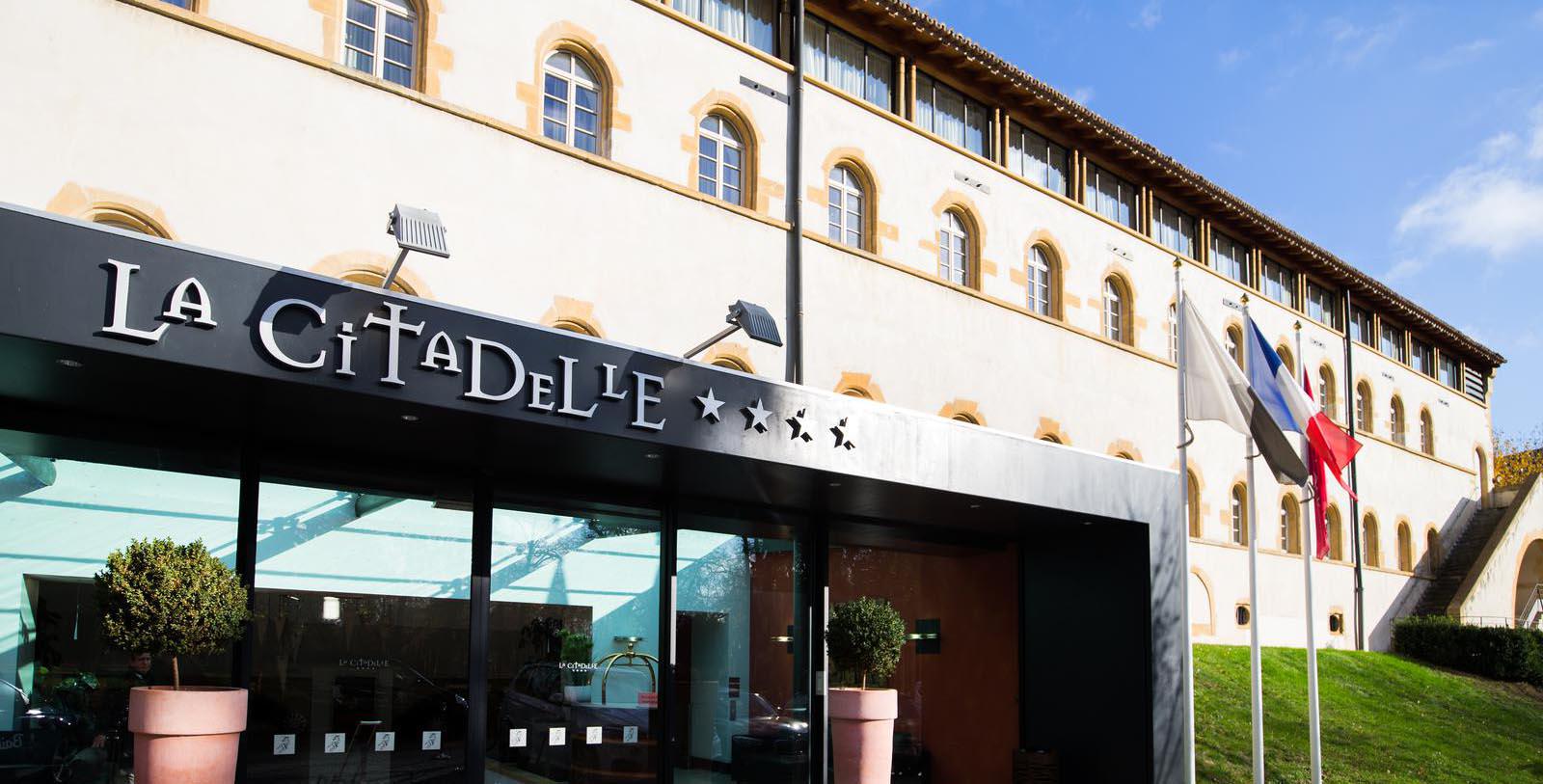Receive for Free - Discover & Explore eNewsletter monthly with advance notice of special offers, packages, and insider savings from 10% - 30% off Best Available Rates at selected hotels.
history
Discover the Hôtel La Citadelle Metz – MGallery by Sofitel, which was once part of a medieval fortress that dates back to the 16th century.
Hotel La Citadelle Metz - MGallery by Sofitel, a member of Historic Hotels Worldwide since 2018, dates back to the 1550s.
VIEW TIMELINEFor much of the 1550s, France waged war against its bitter rival, the Holy Roman Empire. Warfare surged across the continent, with massive battles raging from the Adriatic Sea to the fields of Flanders. Amid the fighting, the French king, Henry II, decided to invade the realm of his enemy. He specifically struck at the Duchy of Lorraine, targeting three cities where sympathy for the French monarchy existed: Metz, Toul, and Verdun. Charles V, the Holy Roman Emperor, quickly retaliated, bringing an army of 60,000 men to lay siege to the small French garrison at Metz. Outnumbered nearly ten-to-one, the French successfully held out against the Holy Roman Empire for several months. Disgusted, Charles V withdrew his beleaguered army from the city. What had helped the French defeat Charles V was an intricate network of fortifications that they had hurriedly erected before the siege. Battered and bruised, the French continued developing their defenses in anticipation of another attack. An enormous citadel soon towered over Metz. Among the many buildings that constituted its complex was a large warehouse known as Le Magasin aux Vivres, in which the French kept the entire food supply for the city’s permanent garrison. Designed with Renaissance-style architecture, Le Magasin aux Vivres stood at 125 meters in length and 38 meters in width.
Even though the Holy Roman Empire never tried to reclaim Metz again, the French occupied the fortress for the remainder of the conflict. The citadel continued defending the city for centuries thereafter, standing as an ominous warning to any nation interested in challenging France’s military prowess. However, with the advent of new military technologies in the 19th century, the French authorities considered the fortress superfluous and decommissioned it. While the government demolished many of the citadel’s buildings, it left Le Magasin aux Vivres alone. City officials then acquired the building and considered using it for a variety of different purposes over the years. Decades passed, however, and nothing happened. It was not until the early 2000s that Le Magasin aux Vivres finally received a new lease on life, when a few hoteliers convinced the city to change the warehouse into a small boutique hotel. Given the go-ahead, the hoteliers began refurbishing the building in 2000. They took great care to preserve the rich heritage of the site, capturing the memory of the citadel for future generations to appreciate. By 2005, they were finished. Sofitel now operates the building as the Hôtel La Citadelle Metz, part of its luxurious MGallery Collection. Now known as the “Hotel La Citadelle Metz - MGallery by Sofitel,” the hotel was inducted into Historic Hotels Worldwide in 2018.
-
About the Location +
Located in the heart the historic region of Lorraine, Metz was originally settled over two millennia ago. The first known people to inhabit the region were a tribe of Celtic people known as the Mediomatrici, who established a rudimentary fortified community atop a hill that overlooked the confluence of the Moselle and Seille rivers. But as Julius Cesar began rapidly conquering Gaul (the nucleus of present-day France) during the Gallic Wars, the Mediomatrici’s settlement eventually fell under the control of the Roman Empire. Recognizing its incredibly strategic significance, the Romans immediately started transforming the entire community into an imposing fortress. At first, the Romans called their new town “Dividorum,” before settling on the name “Mediomatrici” after its original residents. Over time, the name was gradually abbreviated to “Mettis” and then just “Metz.” Metz soon served as one of the primary defensive bastions on the Roman frontier, as well as an important springboard for future military expeditions further into the European interior. Yet, the community’s position along two major waterways made it a bustling center for trade, which attracted thousands of people from all over the Roman Empire. Soon enough, Roman engineers had linked two major thoroughfares through the settlement that connected it with cities like Lyon and Strasbourg. The influx of new wealth also inspired the creation of beautiful cultural buildings like a brilliant amphitheater, a forum, and even several public baths. Local officials even financed the creation of a massive aqueduct several miles outside of town that visitors today can still observe whenever they approach Metz. As such, Metz had grown considerably by the 2nd century AD, becoming one of the largest cities in the Roman province of Gaul.
But the prosperity that Metz enjoyed under Roman occupation came to an end with the collapse of the empire during the 5th century. The city was repeatedly attacked by the marauding bands of Vandals and Huns that roamed Europe in the wake of Rome’s demise. Stability finally returned to the populace when the Frankish King Clovis seized the territory. Clovis’ descendants—the Merovingians—would subsequently use Metz as their royal seat of power for the next three centuries, ruling over a large swath of land that predominately covered most of what is today Belgium and Luxembourg (contemporaries at the time referred to the realm as the “Kingdom of Austrasia.”) Yet, Metz and its surrounding environs soon joined the Kingdom of Lothringia after the Carolingians—successors of the Merovingians—split apart the great Frankish kingdom with the Treaty of Verdun in 843. It subsequently served as the new kingdom’s capital for generations, until it too fragmented at the height of the Middle Ages. The territory had eventually been absorbed by the Holy Roman Empire, in which its realm was parceled out into dukedoms, bishoprics, and merchant republics. Metz was one such destination that achieved a level of autonomy within the Holy Roman Empire, achieving the status of “free city” during the 12th century. The city would enjoy its semi-independence for close to 300 years, ruled by an elected council of elites picked from among local populace. Indeed, the electoral body presided over another prolonged period of economic affluence, ushering in a new golden age for the city. In fact, the city’s leading merchants were even able to act like bankers, loaning money out to various competing bands of rival noblemen located elsewhere in Europe.
Yet, Metz ceased functioning as a “free city” when the King Henry II of France acquired Metz after its ruling class of aristocrats and priests consented to French authority in 1552. Most of Metz had recently converted to Protestantism and feared oppression from the reigning Holy Roman Emperor, Charles V. As such, the residents of Metz and their allies in the region sought refuge with Henry, Charles’ rival at the time. It subsequently became the capital of the “Three Bishoprics” and served once more as an important fortified town. Henry II then proceeded to fight Charles during a constructive conflict known as the “Italian War of 1551 – 1559,” in which the French king attempted to curb the Empire’s influence in central and southern Europe. Among Charles’ war goals involved the recapture of the rebellious city, which he targeted shortly after the start of the war. Unfortunately for the Holy Roman Emperor, Henry’s reinforcement of Metz had morphed it into a considerable citadel, rendering the power of his invading army moot. Disgusted, Charles V evenutally withdrew his beleaguered army from the city, having spent weeks vainly trying to besiege it. Metz has since remained a part of France, save for brief period in which the Germans seized it during the Franco-Prussian War and both World Wars. Today, the city is one of the most culturally vibrant destinations in northern France, known throughout the country as an esteemed vacation retreat. It is home to many outstanding cultural attractions, too, such as the Cathédrale De Metz, the Porte de Allemands, and the Palais du Gouverneur.
-
About the Architecture +
A former military warehouse constructed at the height of the Renaissance, the Hotel La Citadelle Metz - MGallery by Sofitel reflects some of the finest architectural elements of the era. Renaissance architecture itself can trace its roots to the late 1400s, in which it largely replicating the motifs spawned from the earlier “Gothic” designs principles that had defined Europe in the Middle Ages. Yet, the architects at the time decided to incorporate elements of Classical architecture into their structures, placing a greater focus on such features like the dome, the tunnel vault, and the round arch. Columns also became ubiquitous throughout buildings created amid the Renaissance, providing a rich source of architectural detail. Yet, the leading architects of the period placed the greatest emphasis on proportion. As such, many professionals utilized an increasing amount of precise mathematical ratios to achieve perfect symmetry, and ultimately in their view, harmony. Visually, buildings constructed during the Renaissance showcased clearer internal spaces that were both far less complex than the Gothic structures that had preceded them.
The desire to embrace the principles that would become “Renaissance-era architecture” first emerged in Italy, specifically the merchant city of Florence. In Florence, local architects began to draw greater inspiration from the Greco-Roman ruins that proliferated throughout the Mediterranean basin. Those accomplished craftsmen also began to review historical texts from antiquity for guidance, specifically the works of the great Roman architect Vitruvius. The eclectic blend of Classical and Gothic design aesthetics that characterized Renaissance architecture appeared all over Florence, before spreading across the rest of the Italian Peninsula. Among the greatest intellectuals that helped to establish the form were the likes of Sebastiano Serlio, Donato Bramante, Leon Battista Alberti, and Filippo Brunelleschi (often regarded as the “father” of Renaissance architecture). Many engineering masterpieces debuted, including Florence’s Cattedrale di Santa Maria del Fiore, the Basilica di Sant'Andrea in Mantua, and of course, The Papal Basilica of Saint Peter within the Vatican. Soon enough, Italy’s great architectural revolution spread throughout the continent, reaching other places like Germany, England, Spain and Russia.
Yet, it found a particularly receptive audience in neighboring France, where it persisted well into the late 17th century. Nevertheless, the architectural form became so pervasive in Europe that many scholars typically divide it into three different sub-eras. The warehouse that would eventually become the Hotel La Citadelle Metz - MGallery by Sofitel specifically debuted during what historians know refer to as the “Mannerism” stage of the Renaissance, in which architects felt more inspired to incorporate greater thematic details into their designs. As such, the buildings that appeared around the time of the warehouse often appeared more similar to Classical buildings that their predecessors that had appeared earlier in the Renaissance.


























